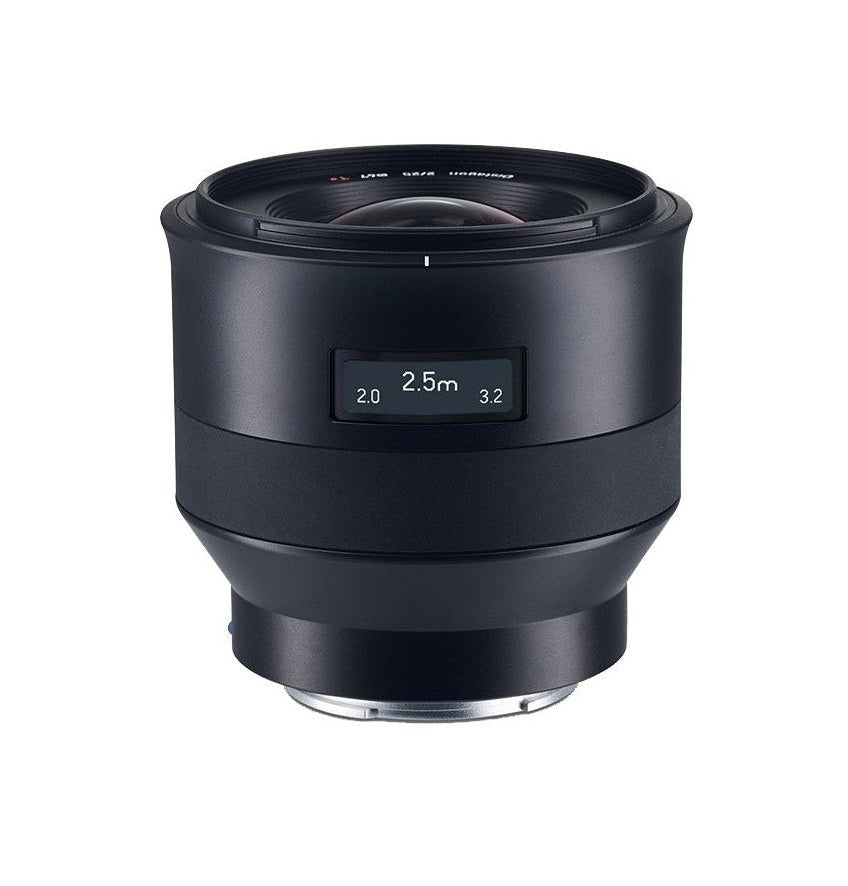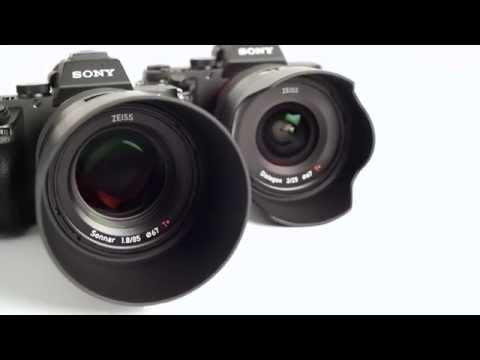Product Description
Zeiss Batis 25mm F2 Sony E mount Lens
The very close focusing distance of the 25 mm wide-angle lens supports the creative implementation of exceptional perspectives. Extremely uniform image quality is ensured right into the corners of the image. The lens is the perfect companion for shooting landscapes, architecture, street scenes and photojournalism.

The ZEISS Batis autofocus lenses were developed especially for mirrorless, full-frame system cameras by Sony. The lenses are fully compatible with all E-mount cameras and offer protection against dust and splashes of water in addition to fast and easy autofocus. For creative work, the distance and depth of field can be read from the innovative OLED display. With the completely new lens design, the high-speed ZEISS Batis family offers perfect imaging performance.
Design
Originally developed for SLR cameras in which, due to the mirror box, a long back focal distance is required for short focal lengths (the distance between the back lens element and the film plane must be considerably longer than the focal length), the Distagon lenses (retrofocus design) are also ideal for mirrorless system cameras thanks to their optimized ray path. This also enables excellent image performance with large image angles for digital camera systems without mirrors.

Smooth and reliable autofocus
The design of the autofocus system requires an extremely accurate shifting of particular lens groups. The focusing system of ZEISS lenses is designed to ensure a robust and smooth-running autofocus mechanism with the best imaging performance.
Versatile full-frame lens
The powerful lens for the mirrorless full-frame system of Sony fulfils the highest requirements. Despite its compact design, the image meets the expectations of professional photographers.

Excellent resolution and high contrast
Richly saturated and vivid colours are a must in the creation of lasting impressions. However, stray light within an optical system leads to a lightening of the image that is particularly noticeable in the shadows. This reduces image contrast, with the result that exposures lack contrast and appear faded. To avoid this, ZEISS combines various specially developed technologies to reduce the undesirable effects of stray light.

Robust and weatherproof metal construction
Thanks to features that are designed to keep out dust and spray water, the lens is perfectly suited for critical outdoor conditions. It is also designed for many years of intensive use.

Innovative OLED display
For the first time, you can accurately read the focus distance and depth of field simply and intuitively on the OLED display on the lens. Especially in poor light conditions – excellent readability is always guaranteed.




























